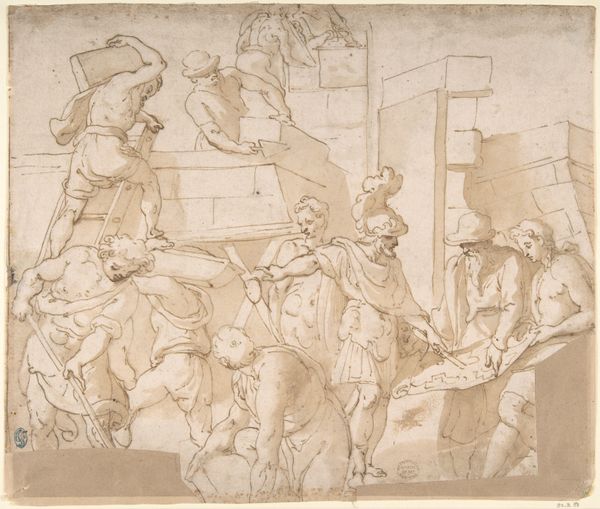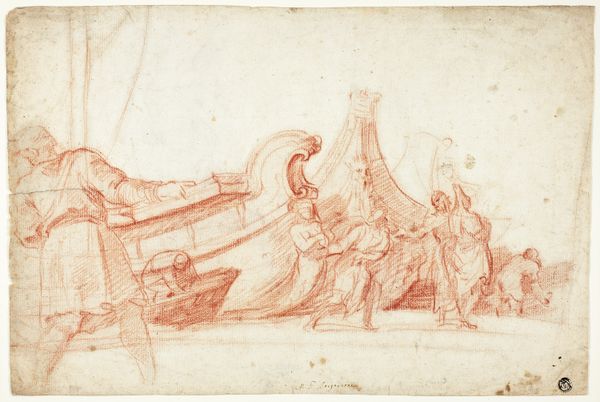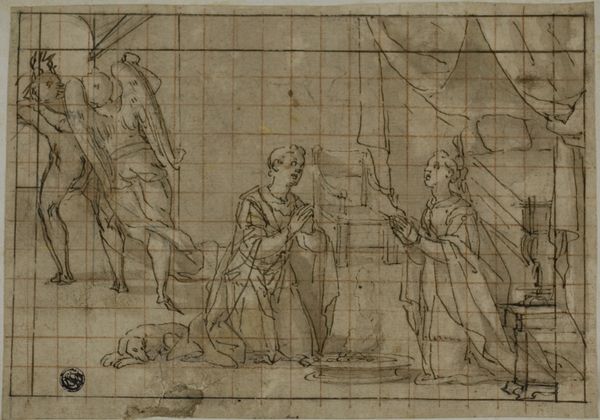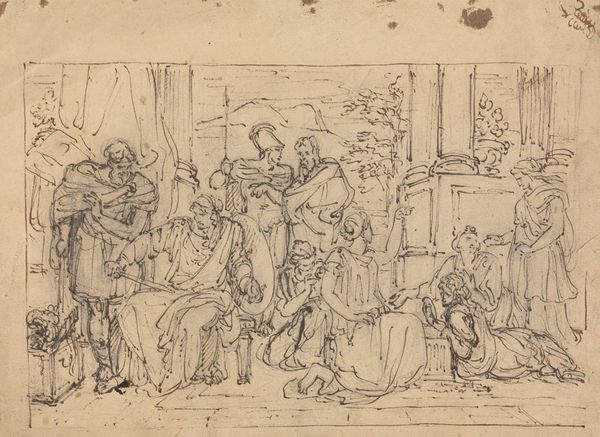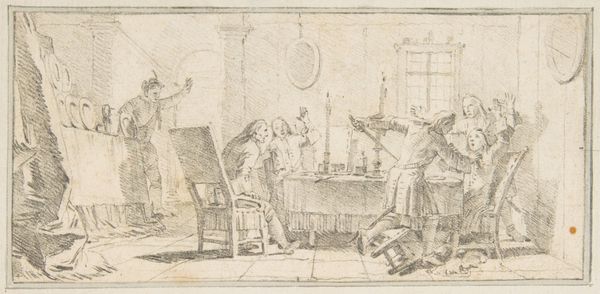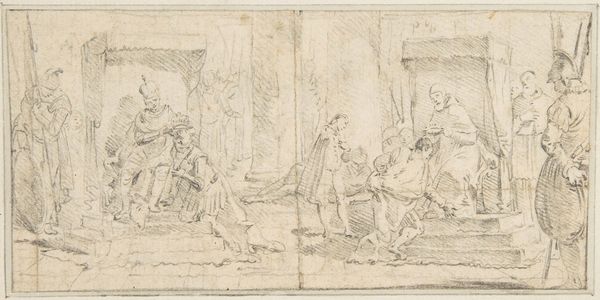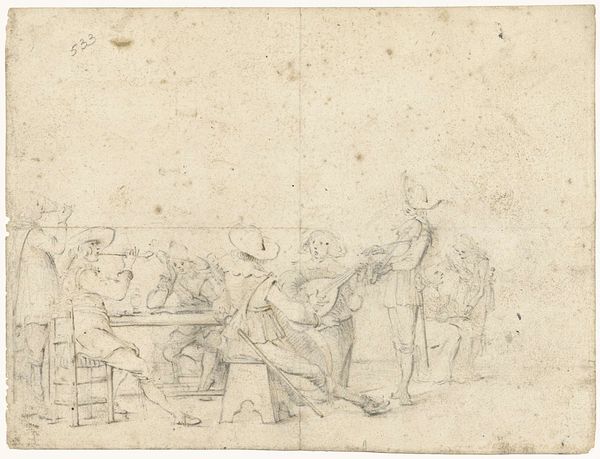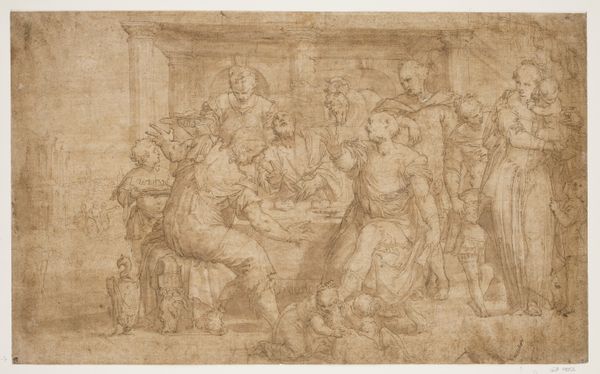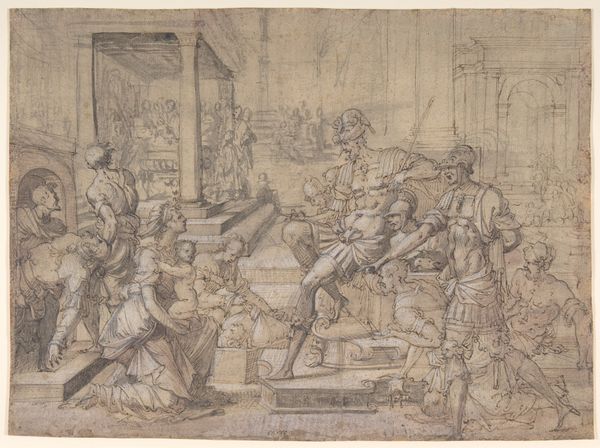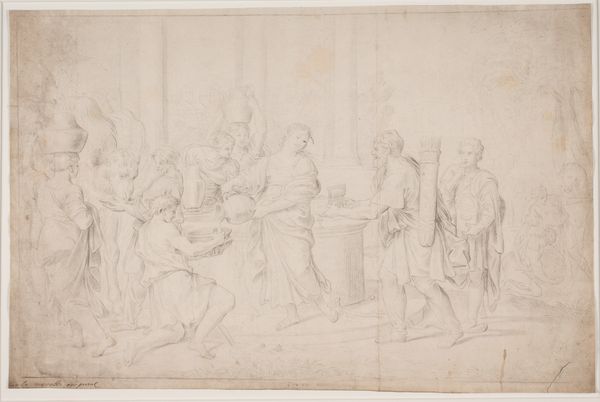
Design for a Lunette: Devils and Saint in a Monastery 1604 - 1612
0:00
0:00
drawing, paper, ink, chalk
#
drawing
#
narrative-art
#
etching
#
mannerism
#
figuration
#
paper
#
ink
#
chalk
#
history-painting
Dimensions: 173 × 260 mm
Copyright: Public Domain
Editor: So, here we have "Design for a Lunette: Devils and Saint in a Monastery," created between 1604 and 1612 by Bernardino Poccetti. It's a drawing made with chalk, ink, and paper, and currently resides at the Art Institute of Chicago. I’m really struck by the underlying grid; it feels so…calculated for something depicting such a fantastical scene. What can you tell me about it? Curator: This drawing gives us a fantastic glimpse into the material process behind Poccetti's work. Notice the grid you pointed out, the chalk underdrawing. This reveals Poccetti's working methods and how he translated his ideas onto paper. For me, the real intrigue lies in the economics of art production at the time. Consider the paper itself – its cost, its availability, the systems of patronage that would have enabled Poccetti to acquire and utilize such materials. How do these resources shape the artwork itself? Editor: That's fascinating. So you're saying the cost and accessibility of the materials themselves influenced the artistic output? Curator: Absolutely. And it’s not just about cost, but also about labor. How many hours did it take to prepare the paper? What kind of artisanal knowledge was involved in creating the inks? Think about the social context of artistic production and how these "humble" materials are essential. Do you see Poccetti making any clear distinctions between high art and mere craft in his materials and method? Editor: Not really, seeing the gridlines feels almost like looking at blueprints, kind of democratizing the image and putting the 'craft' up front. Curator: Precisely! The presence of the grid, visible underdrawing, and use of common materials challenges the conventional hierarchies that separate fine art from craft. What appears to be an elaborate scene becomes more about labor, material choices, and systems of production. Editor: That perspective really changes how I see it. It's not just about devils and saints; it's about the economics and labor embedded within the artwork. Curator: Exactly! And by understanding that, we gain a much deeper appreciation for the artistic decisions Poccetti made.
Comments
No comments
Be the first to comment and join the conversation on the ultimate creative platform.
